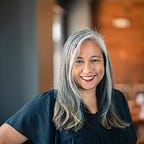Becoming Filipino in America
A funny thing happened to me in America during the pandemic. I became more Filipino. It’s true. Over the last 9 months, I’ve never spoken so much Tagalog, eaten so much Filipino food, and worked with my kababayans (countrymen) since moving from the Philippines to the U.S. two decades ago. It seems I have found comfort in eating food from the motherland, hearing and speaking my native tongue, and seeing family and friends in the Philippines regularly, even if only via Zoom.
I think it’s because of all the uncertainty that’s going on and how the ugly side of America has reared its head. I am also comforted greatly by K-Dramas and kimchi but that’s a story for another time.
Since March 13, 2020, and I remember this because it was a full moon on Friday the 13th, when all our lives changed, I re-discovered the Filipino side of me, reconnected with friends and family back home, and made new kababayan friends, who I may never have connected with on a normal year. There is comfort in finding those who share a past with you, a history, who laugh at the same jokes, who get obscure cultural references.
It all started with these virtual reunions that I hosted for some radio colleagues I worked with, in the Philippines. Back in Manila, I was lucky enough to work for the coolest rock radio station (now defunct) NU 107. The two live streams I hosted were a big hit (86,300 combined views just on Facebook!) After the reunions, I found an audience that was missing the radio station as well as the music and the community it represented. I continued to create shows for two audiences: the US and the Philippines. Working out the timezones was tricky but you know what, if you are interested in the subject matter, you’ll find the time to watch. I rode the wave of nostalgia and felt this need for connection satisfied. Apparently, so did the viewers.
During the early days of the lockdown, I found myself seeking out old friends and reflecting on the past. There is value in looking back in order to go forward. In the words of Philippine National Hero Jose Rizal: “Ang hindi marunong lumningon sa pinanggalingan ay hindi makakarating sa paroroonan.” (He who does not know how to look back from where he came from, won’t reach his destination.)
In October, we celebrated Filipino American History Month and I was proud to be part of the groundbreaking virtual production of the Festival of Philippine Arts and Culture (FPAC) presented by The Association for the Advancement of Filipino American Arts and Culture better known as FilAm Arts. This year, I became a member of FilAm Arts Board of Directors. It is exciting to be a part of such an institution and to participate and even lead the Filipino-American community in Los Angeles and beyond.
I’ve attended the FPAC many times over the years and always came away in awe of all the talent and a little bit homesick each time. With this year’s FPAC, our 3-day online fiesta I was once again blown away — the artists who worked behind the scenes and in front of the camera were astounding. Shout out to our fearless leaders, Giselle Tongi and Charles Uy, and the rest of the gang Knowa, Rhian, Jenna, Jessica, and Keanu.
Here is a video of Day 1 of the Festival of Philippine Arts and Culture.
You can watch the other two days on facebook.com/filamartsla and on YouTube
Two months after the Festival and Filipino-American Heritage Month, I am still feeling the fires stoked within me by this renewed sense of identity and purpose.
